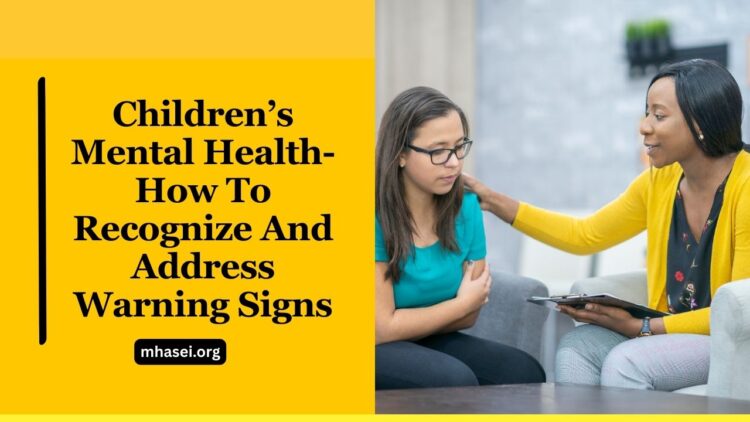Children’s mental health matters more than ever. Globally, around 1 in 7 young people (ages 10–19) experience a mental health disorder, reflecting rising anxiety, depression, and behavioral concerns.
In the U.S., nearly 1 in 5 children ages 3–17 have been diagnosed with a mental, emotional, or behavioral condition—yet two-thirds go untreated. Identifying warning signs early can make a profound impact.
Key Warning Signs in Young Children
| Warning Sign | What It Looks Like | Why It Matters |
|---|---|---|
| Persistent sadness or irritability | Frequent tearfulness, grumpiness | May mask depression or emotional struggles |
| Withdrawal or isolation | Avoiding friends or activities | Could signal anxiety, depression, or social phobia |
| Decline in school performance | Poor grades despite effort | May be tied to attention issues, anxiety, or low mood |
| Frequent physical complaints | Headaches, stomachaches without physical cause | Often masks stress or emotional distress |
| Changes in sleep or appetite | Insomnia, nightmares, overeating or loss of appetite | Disrupted routines affect mood and development |
| Aggression or tantrums | Frequent outbursts or aggression | Could indicate mood dysregulation, ADHD, or emotional trauma |
| Excessive screen time or secrecy | Hidden phone use or obsessive screen access | Often linked to anxiety, depression, or behavioral struggles |
Even though many children exhibit strong resilience—such as curiosity, smiles, and adaptability—ongoing or multiple red flags may indicate deeper issues that shouldn’t be overlooked.
What Worried Parents and Caregivers Can Do
1. Observe Patterns, Not One-Off Days
Temporary sadness, irritability, or anxiety can be part of childhood. But when these behaviors persist—like ongoing withdrawal, declining performance, or physical discomfort with no clear cause—it’s time to take action.
2. Consider Risk Factors
Children exposed to unstable living situations, bullying, or adverse experiences (like parental separation or violence) face significantly higher risks for anxiety, depression, behavioral disorders, or developmental delays.
3. Take a Gentle, Structured Approach
Start by setting aside calm, distraction-free time with your child. Use open-ended questions—“How have school and friends been feeling for you lately?”—rather than “What’s wrong?” Emphasize that feelings are safe to share, and reassure them they’re not alone.
4. Build Routines and Safe Expression
Encourage healthy routines—regular sleep, nutritious meals, screen limits—and creative outlets like journaling, art, or physical play. These supports can reduce stress and help children express emotions constructively.
5. Seek Help When Needed
If warning signs persist or escalate—such as deep sadness, talk of harming themselves, or severe behavioral changes—reach out for professional support.
Schools, pediatricians, and child psychologists can provide assessments, counseling, and tailored strategies. Early intervention often leads to better outcomes.
Children’s mental health often hides behind subtle changes—quiet withdrawal, persistent complaints, shifts in mood or sleep, and academic decline.
Recognizing these warning signs and addressing them early can transform a child’s trajectory. With a blend of gentle observation, structured routines, emotional openness, and timely support, caregivers can guide children toward resilience, healing, and well-being.
FAQs
How long before a behavior becomes a “warning sign”?
If changes—like withdrawal, mood swings, or school refusal—persist for more than 2–3 weeks, they warrant attention. Persistent patterns are more meaningful than isolated incidents.
Are physical complaints really linked to emotional issues?
Yes—many children express stress or anxiety through unexplained stomachaches, headaches, or fatigue. If these complaints are frequent but physical exams are normal, consider emotional causes.
What if the child refuses to talk about feelings?
Use patience and indirect approaches: try drawing, games, or storytelling. Keep reassurances consistent—“I’m here when you’re ready”—and seek professional help if isolation or distress worsens.




